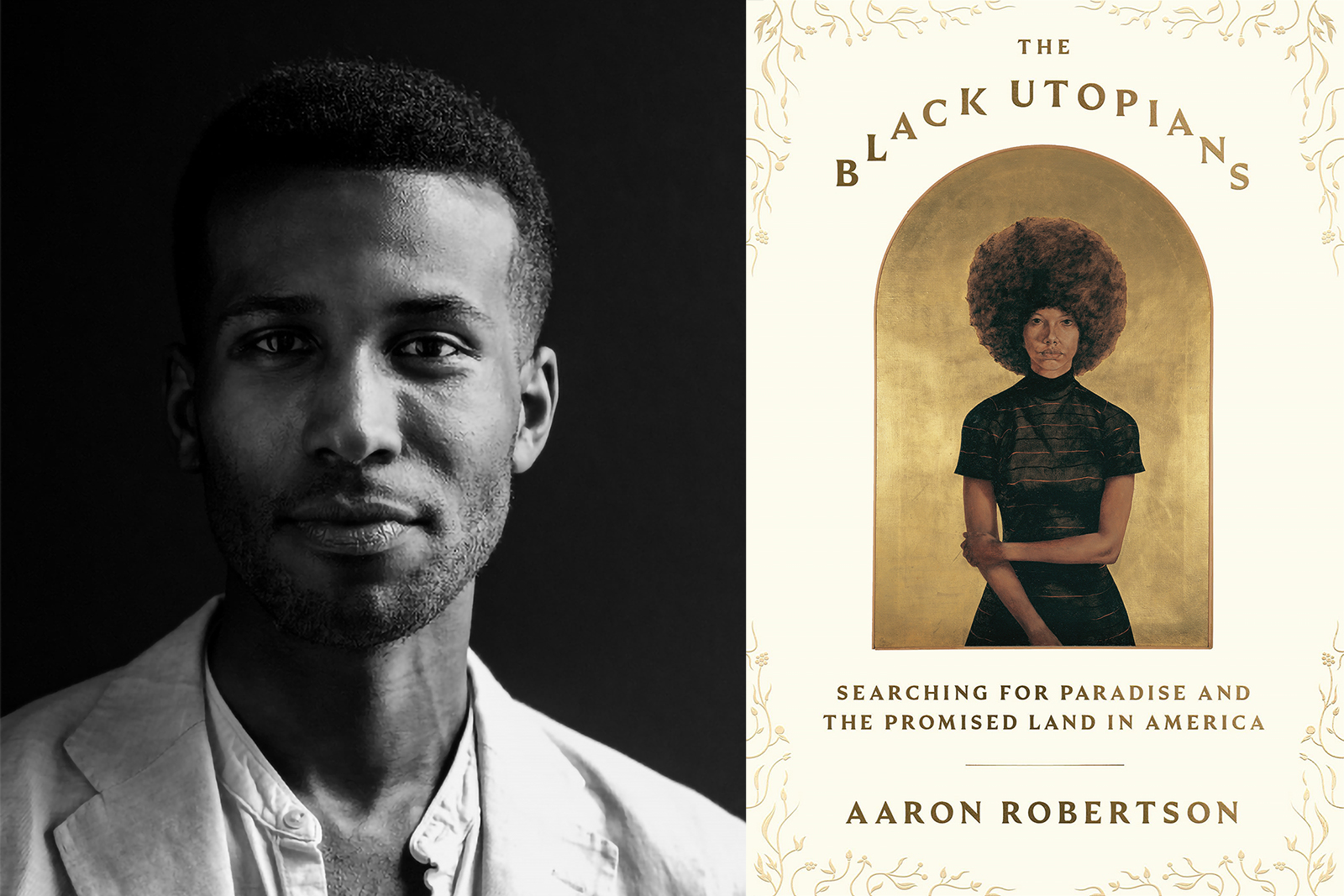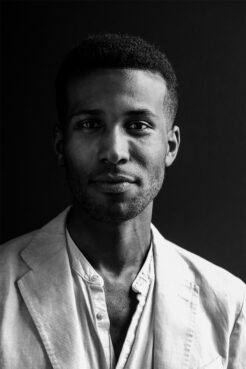
(RNS) — Before he was a Rhodes Scholar, translator and writer published in the New York Times, Aaron Robertson was a Baptist kid attending dozens of churches in the metro Detroit area. Despite this peripatetic religious upbringing, it took until 2019 for Robertson to encounter his native city’s Shrine of the Black Madonna, a United Church of Christ congregation that birthed a Black nationalist commune.
Robertson stumbled upon the Shrine, founded in the 1950s, while doing research for a novel. He learned of the Shrine’s radical children’s community, modeled after Israel’s kibbutzim and Soviet Union kindergartens. He read the sermons of the Shrine’s leader, Albert Cleage Jr., who talked of the Black Messiah. His research promptly took a detour into the Shrine, and Black utopias across the country.
In his exploration of this history, Robertson returned to Promise Land, an all-Black town where his family had settled more than 150 years before. His forthcoming book, “The Black Utopians: Searching for Paradise and the Promised Land in America,” is a sweeping survey of Black utopian movements in the U.S. that features evocative portraits of the groups’ spiritual beliefs and artifacts. RNS spoke to Robertson about his book, available Tuesday (Oct. 1). This interview has been edited for length and clarity.
For readers who are unfamiliar, what is Black utopianism?
Black utopianism is a belief that oppressive systems don’t have to define the significance of Black life. Black utopian traditions can encompass the creation of all-Black towns, or mutual aid programs intended to support Black people. But there is no one form it can take. When I write about Black utopianism as an expression of faith, what I mean is that people who embrace this tradition, they aren’t blindly optimistic about what is possible, but they will not allow despair to determine the course of their lives.
How is Promise Land connected to this idea of a Black utopia?
Promise Land is this small hamlet in the middle of Tennessee. Growing up, I wasn’t aware of its historic significance. This was just a place that I would visit every summer to see my extended relatives. Promise Land was one of many all-Black towns created right after the Civil War by formerly enslaved people. Today, it’s technically a ghost town, though there are still arts and culture festivals. Black towns like Promise Land, for me, represented a very convenient historical starting point for exploring the very long history of Black utopian spaces.
Why intersperse your father’s letters throughout the book?

Aaron Robertson. (Photo by Beowulf Sheehan)
My father was incarcerated from the time I was 8 until I was 18. He got out of prison when I was a freshman in college, and I realized I had lost the original letters he wrote for me, which I think was some kind of reflection of my own feelings about our relationship. I wanted my dad to write me a new series of letters about his past but also about what he what he hoped for in his freedom. What was the life that he wanted to live? That’s a question really at the core of Black utopian thought. What are the lives we could have led?
Can you talk about some of the bedrocks of Albert Cleage Jr.’s theology?
Cleage is often identified as one of the early practitioners of Black liberation theology, which teaches that God is fundamentally a god of the oppressed. Black theology was at the core of the movement that Cleage led, which he called Black Christian nationalism. And really, Black Christian nationalism was a political theology. It did have these spiritual connotations and goals, but Cleage was not interested in being a “Sundays only” kind of preacher. He was interested in the possibilities inherent in Black political life too. Black Christian nationalism was a program intended to revolutionize the meaning of Christianity for Black Americans, but it was also intended to put Black Americans at the helm of their own institutions and destinies.
How did Glanton Dowdell’s Black Madonna mural act as a visual point of reference for Cleage’s Black Christian nationalism?
While Cleage came up among Detroit’s Black elite, Glanton Dowdell grew up in abject poverty, born in a neighborhood on Detroit’s east side. Glanton, as a young man, had spent more than a decade in prison for a murder that he committed. He was also a brilliant visual artist. His work was inflected with social realism, and his subjects were everyday Black people.
In 1967, the Shrine of Black Madonna commissioned him to paint a mural of a Black Madonna and child that transformed the way many members of the Shrine saw themselves. Many people allowed themselves to think that maybe the religious narratives about a white Christ who died meekly on the cross, were just narratives. And maybe, as Cleage argued, Christ was a revolutionary, a Black man, and maybe his mother was a Black woman. The Black Madonna mural was a visual affirmation that inherited narratives did not have to be the final word.
How did Cleage’s Black Christian nationalism movement attempt to live out a Black utopia?
The Black Christian nationalist movement began in force in the early 1970s. Cleage was interested in establishing communes for Black Americans. The first was in Detroit, but there was a missionary movement that spread to Atlanta and Houston, where the Shrine’s other locations are now. It was also very important for Cleage that Black Americans could be self-sufficient. By the late 1990s they purchased thousands of acres in South Carolina they called Beulah Land. It was in many ways the most tangible manifestation of the Black Christian nationalist vision.
How might you compare Cleage’s Black Christian nationalism to today’s iteration of white Christian nationalism?
As soon as Jan. 6, 2021, happened, it was clear that white Christian nationalism was not this abstract, ideological threat. I realized that in the book, I needed to make very clear that Black Christian nationalism was not just white Christian nationalism applied to Black people. I can’t emphasize enough that they’re very different, but what they have in common is both are, in a sense, primarily concerned with the kind of spiritual integrity and material well-being of a particular group of people.
In the case of Black Christian nationalists, Cleage’s mantra for his movement was that nothing is more sacred than the liberation of Black people. Though his work was meant to benefit Black people first, he was not interested in trampling upon the rights of other groups. Cleage was not an anti-white minister, he was not anti any other group. Black Christian nationalists were open to a variety of ideological influences, whereas white Christian nationalism is very much about shoring up the power of white patriarchal Christians at the expense of other groups of people. They want to degrade the position of anyone who is not that.
You mentioned Black- and Brown-led intentional communities carrying on the legacy of Black utopianism today. How do these groups approach spirituality?
Even at the height of the Shrine’s influence, there were people who said, you are still a part of the Christian church, there are still problems with patriarchy and disparities in terms of the roles of women. In my own research, I did not find explicit examples of the Shrine of the Black Madonna responding to the AIDS crisis.
In today’s intentional communities, for many people, there is a resistance against mainstream Christianity and an embrace of a more ambiguous sense of spiritual belonging. I think there’s a great emphasis on personal and communal connection with the land and what it gives us. Even more than invoking the existence of God, there may instead be invocations of Mother Earth. Instead of praising the saints, you might have people praising mushroom and tree networks. That is a really big shift.
Did working on this project impact how you think about your own spirituality or religious roots?
As I grew older, for various reasons, I began to feel more disconnected from the faith traditions I grew up with. I now identify as agnostic. But there’s a part of me that also feels very rudderless. More than any sort of spiritual part of the faith, what I miss most is the community. One of the fascinating things about writing the book is that I found myself envying some of the Black Christian nationalists who grew up in the church. That was where this kind of utopian longing for me started. It was looking at this community and wondering, how can I reconnect with a sense of belonging, a sense of community, while also holding on to what I think makes me unique, and me, still?
